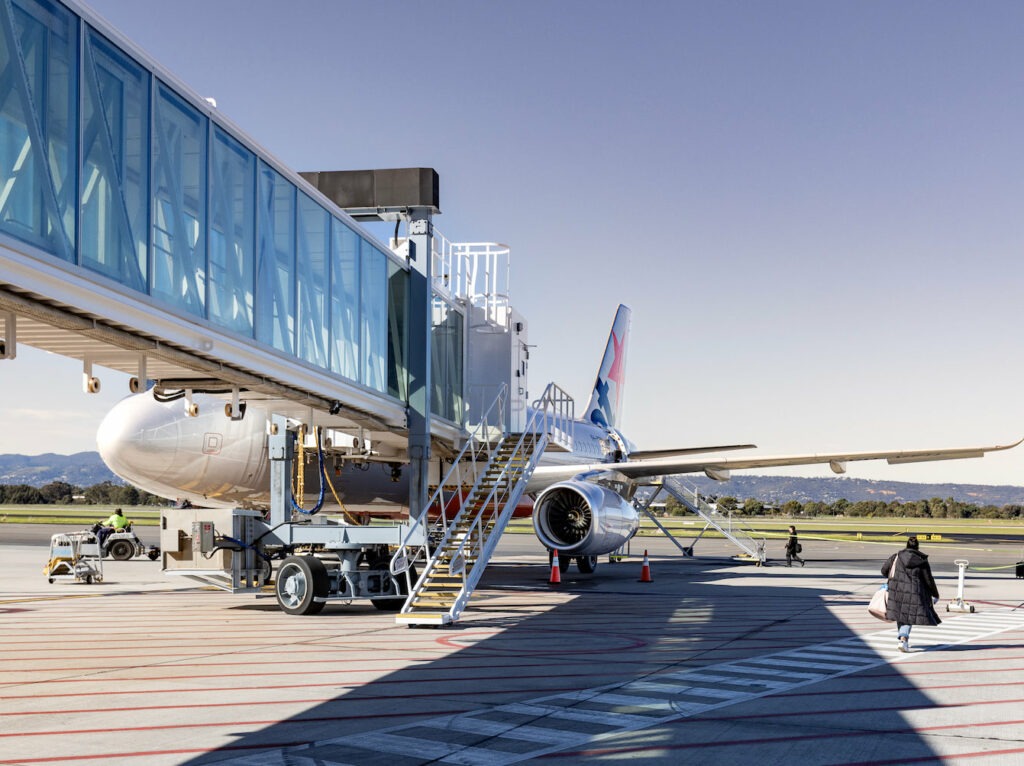This program is designed to meet the Theory element of aircraft type rating training, as outlined in CASR MOS Part 66 Appendix III, for an aircraft maintenance engineer seeking a B1 and/or a B2 rating and type qualification on the Airbus A320 Series aircraft, equipped with IAE V2500 engines.

Learning Outcomes
At the successful completion of this course, the student will have gained sufficient knowledge of the AIRBUS A319/320/321 (IAE V2500) necessary to perform and certify maintenance tasks permitted to be carried out as certifying staff in the category B1.1 &/or B2.
It provides detailed description, operation, component location, removal/installation, BITE and troubleshooting procedures to a maintenance manual level. The student will have an understanding of the specific human factor issues that may be associated with this particular aircraft type.
Assessment is by way of Written Multiple Choice Assessment.
Course Prerequisites
This course has the following prerequisites:
- Must be familiar with turbine powered transport aircraft and digital electronic equipment and must have the knowledge and/or experience required for maintaining turbine powered transport aircraft. (e.g. Cert IV in Aero skills or equivalent)
- Preferably, the student is a holder of a valid Part 66 AME license in the Categories B1 and/or B2 or equivalent.
Practical on Course is also available and can be packaged together: → A320(19/20/21) POC
TUITION FEES
Course Duration
Get the FAQ
READ THE FAQCourse Information
See a breakdown of the course, get information on entry criteria, and explore the upcoming delivery dates.
Syllabus
The AIRBUS A319/320/321 (IAE V2500) B1.1/B2 Theory course will cover the ATA’s specified in the syllabus below and taught to the ATA 104 Level specified. Due to different experience and learning styles, the time will vary slightly between classes.
| ATA | Description | ATA 104 Level |
| Introduction | ||
| 00 | Documentation | 1 |
| 05 through 20 | A/C General & Servicing | 1 |
| 21 | Air Conditioning | 3 |
| 22 | Auto Flight | 3 |
| 23 | Communications | 3 |
| 24 | Electrical Power | 3 |
| 25 | Equipment & Furnishings | 3 |
| 26 | Fire Protection | 3 |
| 27 | Flight Controls | 3 |
| 28 | Fuel Systems | 3 |
| 29 | Hydraulic Power | 3 |
| 30 | Ice & Rain Protection | 3 |
| 31 | Indicating and Recording | 3 |
| 32 | Landing Gear | 3 |
| 33 | Lights | 3 |
| 34 | Navigation | 3 |
| 35 | Oxygen | 3 |
| 36 | Pneumatic | 3 |
| 38 | Water/Waste | 3 |
| 46 | Information Systems | 3 |
| 47 | Inert Gas System | 3 |
| 49 | APU | 3 |
| 51 | Structures – Standard Practices | 3 |
| 53-57 | Structures | 3 |
| 56 | Windows | 3 |
| 52 | Doors | 3 |
| 71/72 | Power Plant/Engine | 3 |
| 73 | Engine Fuel & Control | 3 |
| 74 | Ignition | 3 |
| 75 | Air | 3 |
| 76 | Engine Controls | 3 |
| 77 | Engine Indicating | 3 |
| 78 | Exhaust | 3 |
| 79 | Oil | 3 |
| 80 | Starting | 3 |
Course Programme
The theoretical instruction is intended to provide the students with sufficient knowledge of the AIRBUS A319/320/321 (IAE V2500) necessary to perform and certify maintenance tasks permitted to be carried out as certifying staff category B1 &/or B2. It provides detailed description, operation, component location, removal/installation, bite and troubleshooting procedures to a maintenance manual level. The student will have an understanding of the specific human factor issues that may be associated with this particular aircraft type.
The course will follow the outline below for lesson order and refer to the Syllabus for duration of topics and overall course.
Each lesson will follow the guide below:
- General overview of the ATA.
- In-depth presentation of the sub systems of the relevant material IAW student booklets
- Safety aspects.
- Use System Schematics as required for clarification of locations, set-up etc.
- Questions from students are to be answered prior to moving on to the next lesson.